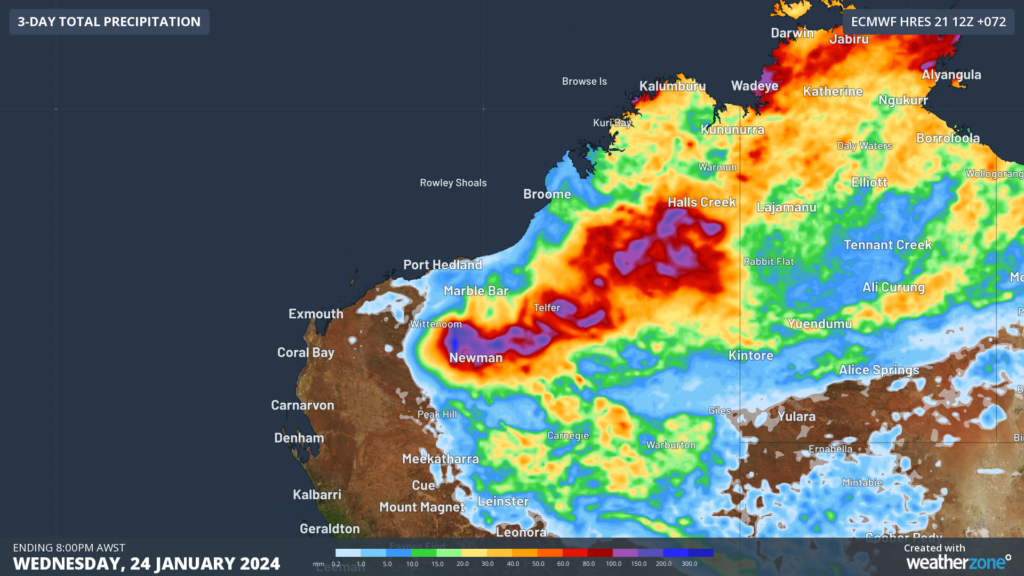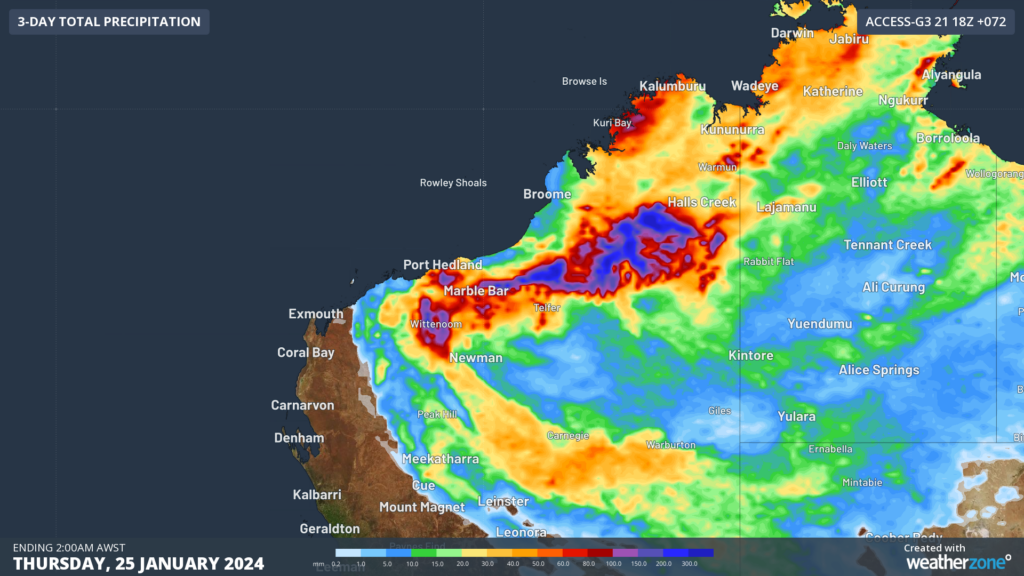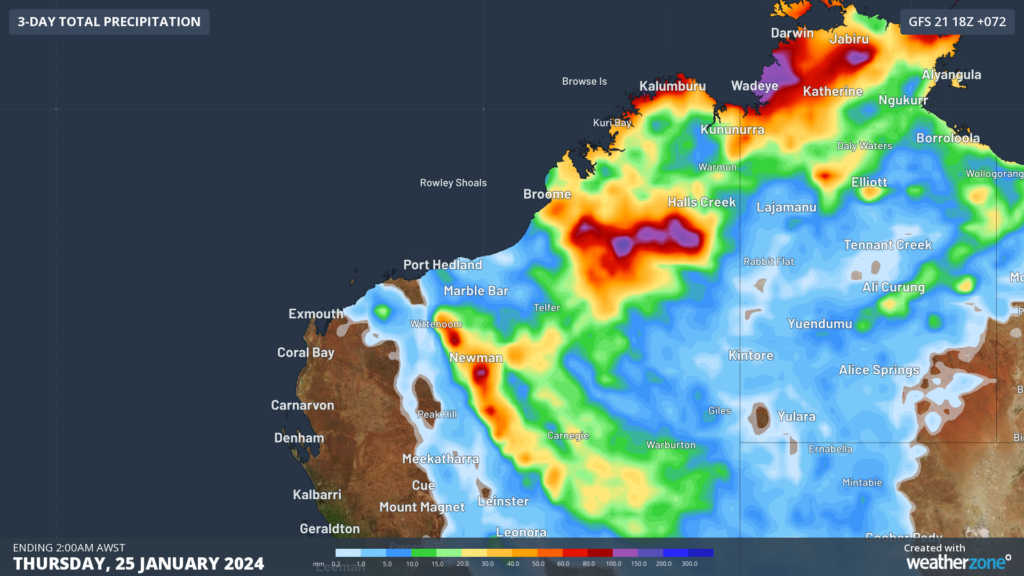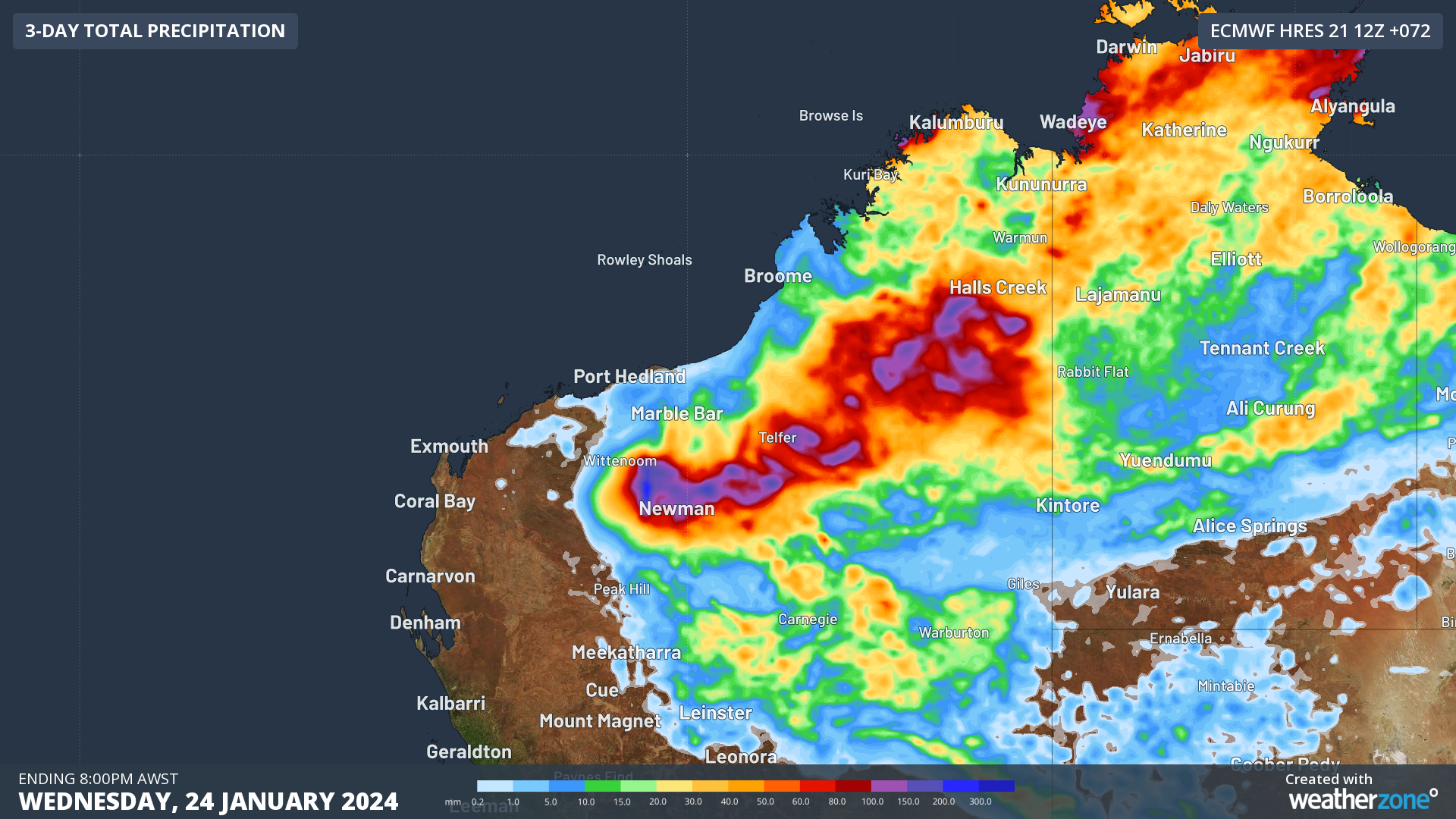A tropical low will cause heavy rain and thunderstorms across northwestern Australia later this week, with flooding possible in parts of the Pilbara.
A slow-moving tropical low has caused persistent rain over parts of the NT during the past on to two, producing several hundred millimetres in some areas. Elliot’s 433 mm during the past 12 days was three times its January monthly average.
The low pressure system has now moved across the border into WA and will continue to spread rain and storms across the state’s north over the next few days.
Most forecast models suggest the low will move towards the west and soak inland areas of the Kimberley and Pilbara, and parts of the state’s northern Interior.
Some models predict 50 to 150 mm of rain over a broad area stretching from the southern Kimberley across the North Interior to the southern Pilbara between now and Thursday. Locally intense rainfall due to thunderstorms could produce six-hourly rain rates of 100 to 160 mm.
However, there is some uncertainty regarding where and how much rain will fall, highlighted by images below.



Images: Forecast accumulated rain during the 72 hours ending on Thursday night, according to the ECMWF-HRES model (top), ACCESS-G model (middle) and GFS model (bottom).
A severe weather warning and flood watch have been issued for the northern inland of WA in response to this system. Be sure to stay up to date with the latest warnings for the most accurate information on this developing weather event.
Our Weatherzone clients have access to our lightning and severe weather tracking and alerts, thunderstorm tracking and high precision and site-specific forecasting, along with comprehensive reporting capacity. For more information, please contact us at apac.sales@dtn.com.






